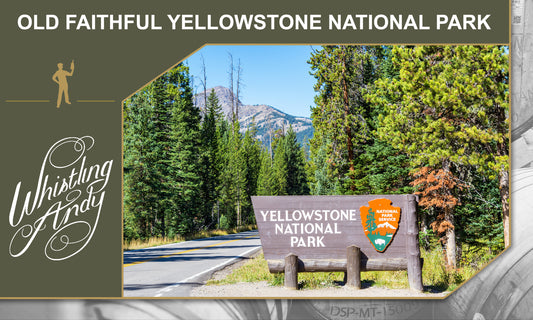One of the most popular spirits, bourbon is loved by many for its warm and sweet flavor profile. It’s a key ingredient in many cocktails, yet also tastes great on its own. But not all bourbon is created equal, or even created with the same ingredients. Two of the biggest contenders? Rye and wheat.
What makes bourbon, bourbon
Bourbon is a distinct type of whiskey aged in a new, charred oak barrel. Different levels of char create different colors and levels of flavor, including smokiness, vanilla, and toffee.
By law, all bourbon must be made from at least 51% corn. The other 49% of the mash, or the distiller’s unique combination of other ingredients, can be any combination of grains, including wheat, rye, and malted barley.

Malted barley
Usually only a small percent of the total mash, this ingredient is the key to delivering essential enzymes that help free up the fermentable sugars in wheat, rye, and corn.
Rye
Rye has a stronger aroma and flavor profile than wheat, easily traveling to your nose on alcohol vapors. The most common aromas are spices, fruit, and grass. As a rule of thumb, rye bourbons do best when mixed in cocktails.
Wheat
Wheat has a subtler aroma that tends to create a smoother, more earthy drink. It has a signature flavor of grass and earth mixed with a hint of sweetness. Wheated bourbons are typically best either neat or on the rocks.

A brief history of wheated bourbon
In wheated bourbon, which still contains a minimum of 51% corn, wheat is the next highest ingredient, sometimes as high as 35%. Varying the amount of wheat used allows distillers to create unique flavor profiles. Wheat is composed of tightly packed proteins, which means that yeast has a harder time accessing the starch. For wheat to become alcohol, it either needs to be malted (which releases enzymes) or paired with malted barley.
William LaRue Weller
Weller is often credited as the first to use wheat instead of rye when creating bourbon. He created his own brand and later merged with the A. Ph. Stitzel distillery, creating Stitzel-Weller. Their bourbon was considered top-notch until they closed in 1991.
The flavors of wheat
Wheat is a more subtle ingredient, allowing the corn in bourbon to really shine. Wheated bourbons also retain more of the vanilla flavor that’s found in charred barrels.
Many distillers will use 70-80% corn when using wheat as the secondary ingredient (though rye and malted barley still often make an appearance).
In general, wheated bourbons will be sweeter and smoother, making them the perfect choice to drink neat or on the rocks. Their more subtle flavor can often be lost when used in cocktails.

A brief history of rye bourbon
Rye likely gained traction in the US because it was a favorite of President George Washington, who created rye whiskey in his own distillery in Virginia. Rye whiskey quickly lost its traction with the introduction of bourbon and it was later prohibition.
Rye bourbon is often found in high concentrations, ranging from 20% up to 35%, creating a strong and distinct flavor profile (and often the spirit of choice for a Manhattan).
The flavors of rye
Rye is undeniably the stronger flavor, offering a range of spicy notes to any bourbon. The most common spices noted include pepper, cinnamon, mint, and tobacco. Often described as an aggressive flavor, rye bourbons pair well in cocktails thanks to their distinct taste.
Rye bourbon is most commonly used in popular drinks such as highballs, Manhattans, and the old-fashioned.

Rye vs. Wheated Bourbon: flavor profiles
While some can tell the difference based on smell alone (hint: rye bourbon should light up your nose like a Christmas tree), those newer to spirits may need some time to tell the taste difference.
Rye Bourbon
The main ingredient is corn, but the predominant flavoring grain used is rye (the percentages will vary based on the distiller). Some may use a ratio of 51% corn, 35% rye, and a mix of wheat and barley for the remaining 14%. Others may choose something like 70% corn, 20% rye, and 10% wheat and barley.
Expect an intense and spicy flavor that will sit strong on the back of your tongue (sometimes creating a burning sensation). As it is a bolder spirit, it’s best used in cocktails where it will retain its unique flavor.
Wheat Bourbon
The main ingredient is also corn, but the predominant flavoring grain used is wheat. Distillers can choose from a range of ratios. Some may go 51% corn, 30% wheat, 19% rye and barley, while others may choose 80% corn, 15% wheat, and 5% barley (allowing the natural flavor of the bourbon to shine).
Expect a soft and sweet flavor with fruity undertones. This mild drink is perfect to sip neat or on the rocks and its flavor will often be lost if used in cocktails.
How to choose
While some bourbon enthusiasts will insist that one is better than the other, both rye and wheated bourbons have their uses. Different distillers have perfected different flavor profiles for each, so don’t be afraid to try different brands and experiment with their use in cocktails. Many spirit lovers have a favorite wheated bourbon for sipping and a go-to rye bourbon for cocktails. You can’t go wrong with either choice.





